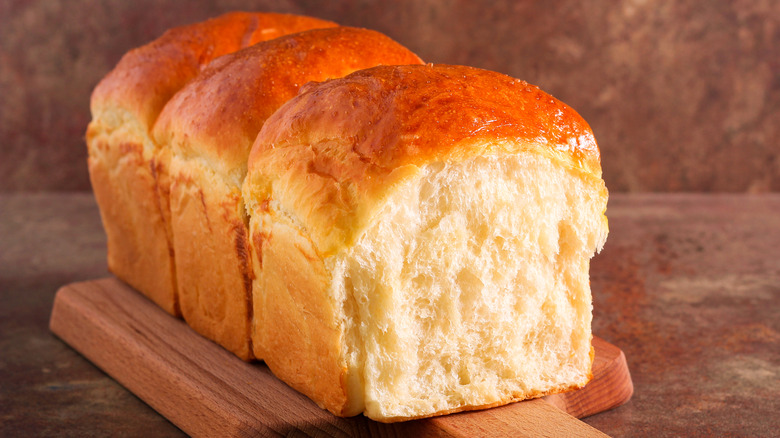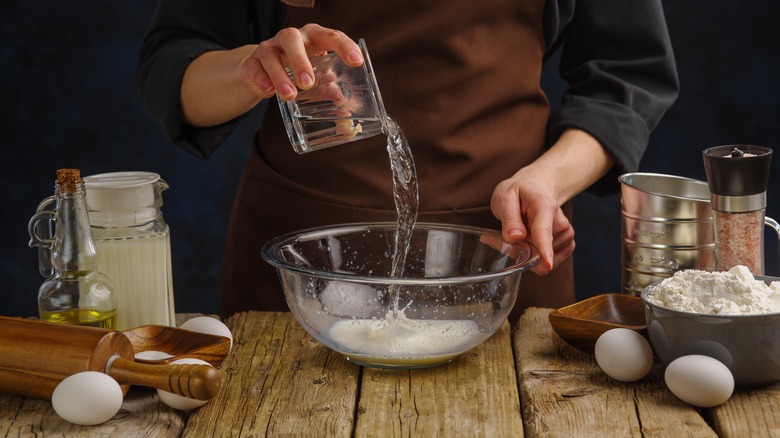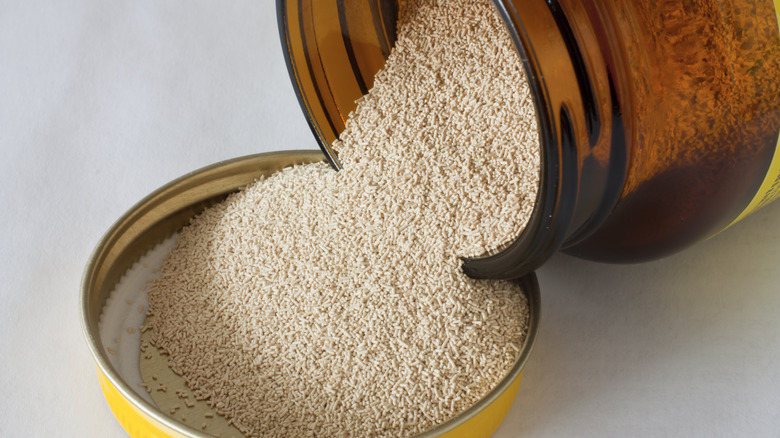The Yeast Mistake That Stops Bread From Rising
Breadmaking requires a hefty pinch of optimism. Despite our best efforts, each round of mixing, kneading, rising, and baking leaves us holding our breath as we aim for the perfect loaf. Every bake presents a new opportunity to achieve our best batch yet — or to learn from a mistake that we won't repeat.
A common challenge for those new to baking is using dried yeast. This ingredient offers a quick and easy path to consistently fluffy bread, but only under the right conditions. To ensure your dough rises successfully, it's crucial to bring your water to the appropriate temperature.
Think of your yeast like Goldilocks — you don't want to feed it anything too hot or too cold. This is because, much like the natural yeast in your sourdough starter, commercial dried yeast is alive. Scalding it with boiling water will kill it, preventing your bread from rising. For active dry yeast, aim for water that's 100-110 degrees Fahrenheit, and for instant yeast, target 120-130 degrees Fahrenheit.
Temperature impacts yeast
While it might be tempting to "guesstimate" your water's temperature, using a thermometer is the most reliable method. If you're unable to verify that the water is below the yeast-killing 140 degrees Fahrenheit, test its temperature by dipping a finger in, or applying a few drops to your wrist, similar to testing a baby's bottle. Water that's too hot for you will also be too harsh for the yeast.
On the flip side, ice-cold water will also hinder your dough's rise. Although the yeast will survive a cold plunge — and actually should be stored in the freezer to keep fresh longer — it will need significantly more time to expand and puff up, potentially affecting the dough's texture, and resulting in a less satisfying product.
To foster a lofty loaf or tender dinner rolls, ensure the dough sits in a warm environment. If your kitchen is cool, consider using a heating pad to provide a consistent warm environment. This helps the yeast stay active, feeding on the sugars and starches in your mix. To check if the dough has proofed correctly, perform the poke test before proceeding to bake.
Comparing active dried yeast and instant
Grocery stores typically sell two types of dried yeast: active dry and instant. Though there were significant differences between them in the past, modern manufacturing has made them relatively interchangeable, primarily differing in granule size and activation speed.
Active dry yeast, with its larger granules, works slowly, allowing for a longer rise and more flavor development. Recipes will often instruct cooks to bloom or proof this yeast in warm, sugary water until it becomes foamy, a sign it's ready to help your pizza crusts rise, and country loaves expand.
Instant or rapid-rise yeast is ideal for bread machines and enriched doughs that can't spend hours rising. You can mix its smaller granules directly into the dough, where they quickly dissolve and get to work, as the name suggests. This yeast can withstand higher temperatures, making it suitable for recipes that don't include a proofing step.



